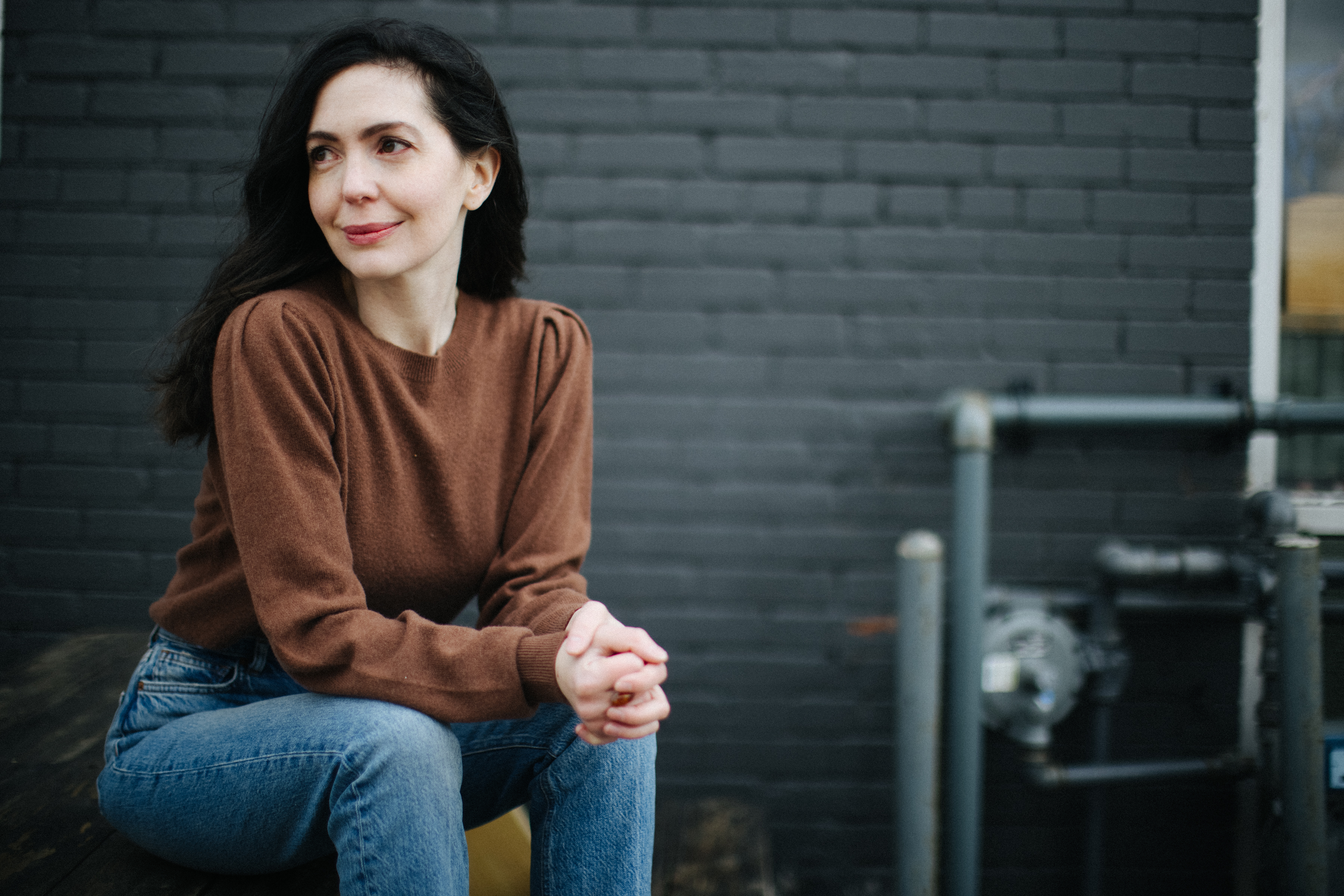
Martha Schabas (Liz Beddall)
Author and former Globe & Mail dance critic Martha Schabas followed up her ballerina-centric debut Various Positions with My Face in the Light (Knopf Canada) earlier this year. A piercing look into the incandescent prisons of memory, the novel charts the movements of actress Justine Weiss after she leaves her husband and career to search for the only father figure she has ever known: the English sculptor ex-boyfriend of her estranged mother.
Novelist Jean Marc Ah-Sen asked Schabas about the origins of her sophomore realist novel, the relationship of inauthenticity to selfhood, and the dangers of idealizing principled men.
Your new novel begins with a stranger offering Justine bed and board in exchange for some nebulously defined labour. You have been up front about encountering a similar situation while travelling. How did you determine which elements of your life you would allow to seep through the text?
I wrote the novel years after I’d had this run-in with a stranger, so the event already felt fictional to me, having lived in my memory for so long. In fact, I’ve only remembered that the episode isn’t entirely made up now that the book is out and I’m finding ways to talk about it. But even if I’d written the scene the next day, I wouldn’t have felt concerned about this sort of seeping you describe. That tension – between my experience and the text – rarely exists for me when I write because I’m less interested in the facts of my life and more in my perception of them, which is already its own kind of fiction. The barrier between my “writing thoughts” and my “living thoughts” is a permeable one to the extent that my life doesn’t feel like a stable record of events that I can measure my work against.
Justine’s keen perspicacity in reading people’s behaviour allows her to become a formidable mimic. What made you want to write about an attribute usually considered laudable as a debilitating talent?
I’m interested in the comparison between what we consider a performative art and what we consider a creative one, and the point at which they might overlap. I think about this a lot as a dance critic: when does a dancer become so authoritative in her interpretation that she seems author of her own movement? The idea applies just as well to acting – there are actors who are effective at delivering lines and creating the semblance of character, and then there are those who offer something almost transcendental and become artists in their own right. Justine has this great talent as a mimic, but she sees it as an effortless and somewhat undignified party trick, sort of like popping your elbow out of joint. This sense of trickery feeds a greater feeling of fraudulence in her life and speaks to larger themes in the novel about lying, authenticity, and selfhood.
My Face in the Light is written in a stream-of-consciousness, polished literary style evocative of Virginia Woolf. Did you draw inspiration from other writers, or did you develop Justine’s voice by being insusceptible to outside influences?
I’m a huge admirer of Woolf and would love to accept the compliment of this comparison, but I wouldn’t describe Justine’s narration as stream-of-consciousness. While the novel exists in the arena of her mind, Justine uses the conventions of a realist narrator, describing her progression through the action in a linear way and maintaining a mediated distance from the text.
You’re probably referring to what I call her “declarative bursts,” which are sections of text that recur occasionally in which Justine makes fragmented pronouncements that seem to give the reader more direct access to her thoughts. But I’d argue that these passages are quite self-conscious and performative – sort of the opposite of stream-of-consciousness. Justine is testing herself with these declarative exercises; she’s trying on ideas for size and being deliberately provocative.
As for the second part of your question: all my writing is in some way a response to my reading. I wouldn’t believe a writer who claimed otherwise!
Justine is searching for her mother’s ex-boyfriend Aaron, who inspires her belief that “the nobility of simple motives had always seemed like the mark of great manhood … while I afforded women all the normal messy vicissitudes of human psychology and feeling.” Can you talk about how this outlook might inform the book’s dramatic action?
It’s an interesting quote, and Justine delivers it fully aware that she’s being reductive and gendered. In many ways, the novel is about Justine’s recovery from a mother who indulged every emotional whim and Justine’s consequent idealization of self-denying men. But it’s worth noting that Justine has this thought somewhat defensively. She’s just listened to a man admit that he often doesn’t respect the women he falls in love with, and wouldn’t tolerate many of their non-physical characteristics in men. That tension between appearance and truth, between surface and interior, is key to the novel, too.
This interview has been edited and condensed.
 Contact us via email
Contact us via email

